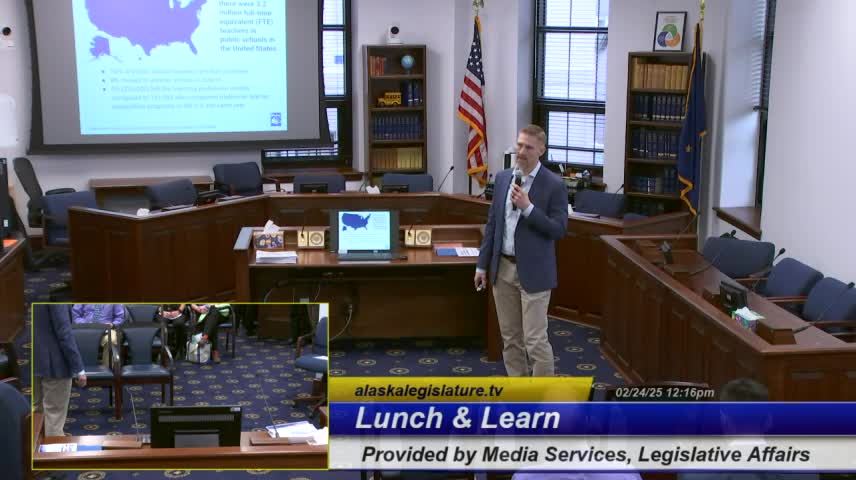Anchorage School District faces teacher shortage amid high resignations and budget cuts
February 24, 2025 | 2025 Legislature Alaska, Alaska
Thanks to Scribe from Workplace AI , all articles about Alaska are free for you to enjoy throughout 2025!

This article was created by AI using a video recording of the meeting. It summarizes the key points discussed, but for full details and context, please refer to the video of the full meeting. Link to Full Meeting
In the 2021-2022 school year, Alaska experienced a staggering 22% turnover rate among its teachers, with nearly 1,000 educators leaving the profession or relocating out of state. This trend mirrors a national issue, where approximately 16% of public school teachers across the United States exited their roles, raising concerns about the sustainability of the teaching workforce. The meeting revealed that Alaska's teacher preparation programs produced only 153 licensure candidates that year, a mere 16% of the teachers who left, indicating a significant gap in the pipeline for new educators.
The Anchorage School District (ASD), which employs over 3,000 teachers, reported a resignation rate of 13% during the same period. This high turnover coincided with the post-pandemic "Great Resignation," where many individuals reevaluated their career paths. The district's reliance on alternative hiring pathways, such as emergency certificates and international recruitment, has not sufficiently filled the gaps left by departing teachers. Despite efforts to attract candidates through signing bonuses and relocation assistance, the ASD is struggling to meet its staffing needs.
Looking ahead, the district anticipates cutting approximately 375 teaching positions due to budget constraints, which could exacerbate the existing staffing crisis. The uncertainty surrounding funding and hiring timelines poses a significant risk, as delays in recruitment could lead to even fewer candidates available for the upcoming school year. The meeting emphasized the importance of timely budget approvals to facilitate hiring during the optimal recruitment window.
Additionally, the changing demographics of the teaching workforce were discussed, with a notable shift from defined benefit retirement plans to defined contribution plans. This transition may influence retention rates, as newer employees may not have the same incentives to remain in the profession long-term.
In conclusion, the Alaska Legislature's meeting brought to light critical issues regarding teacher retention and recruitment that require immediate attention. As the state grapples with these challenges, the need for innovative solutions and sustained support for the education system has never been more pressing. The discussions underscored the importance of addressing these issues to ensure a stable and effective teaching workforce for Alaska's students.
Converted from 02/24/2025 House MISCELLANEOUS MEETING meeting on February 24, 2025
Link to Full Meeting
Comments
View full meeting
This article is based on a recent meeting—watch the full video and explore the complete transcript for deeper insights into the discussion.
View full meeting